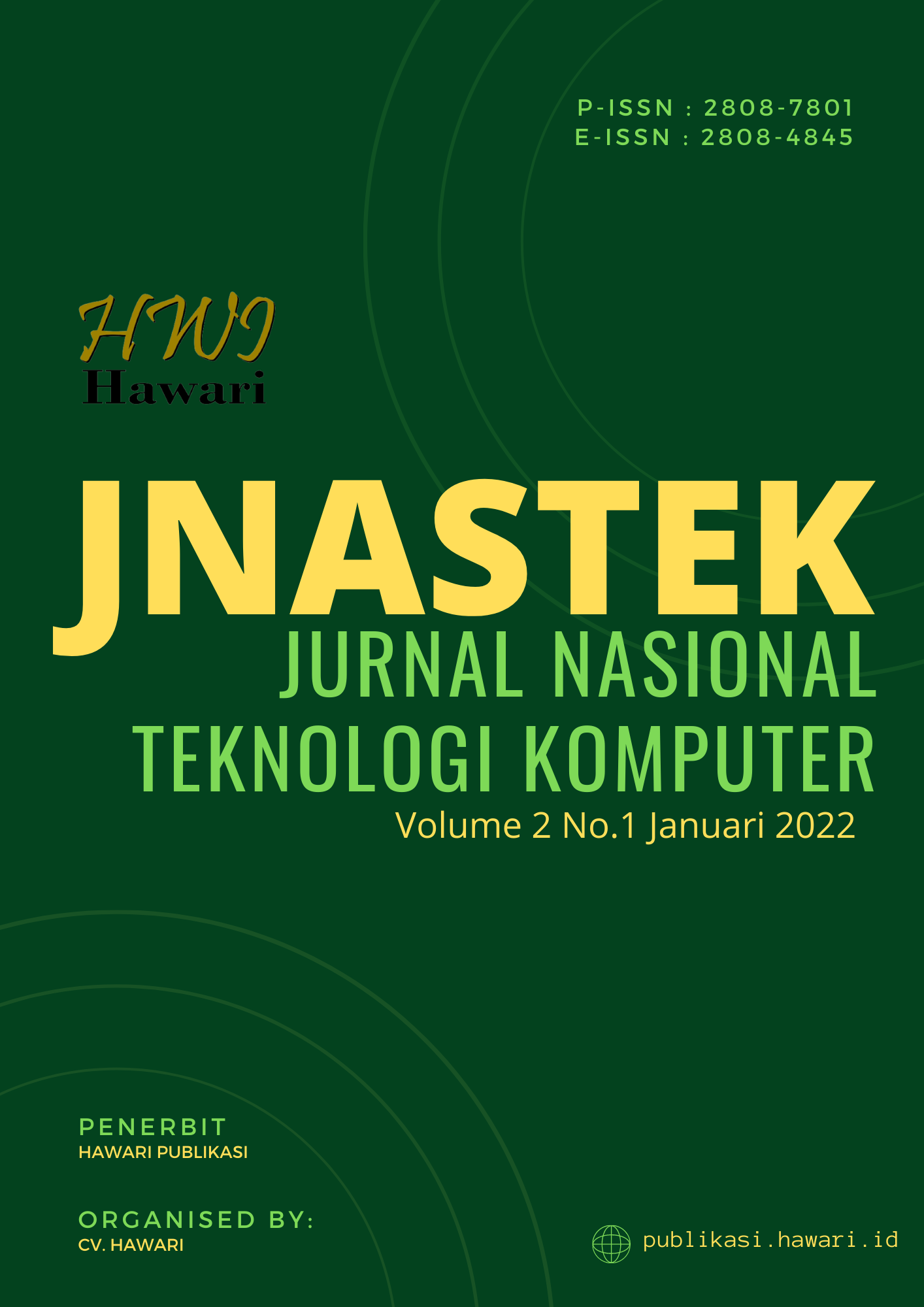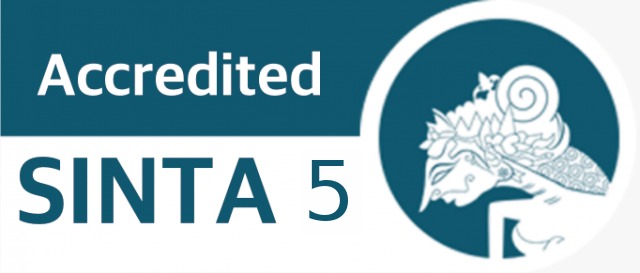ANALISA WEBSITE W3SCHOOLS MENGGUNAKAN SYSTEM USABILITY SCALE
DOI:
https://doi.org/10.61306/jnastek.v2i1.14Kata Kunci:
Quality Website, W3schools, Website, UsabilityAbstrak
Website is the main choice of learning web programming for a beginner, with the website can facilitate the learning process. The website used to learn programming tutorials is W3schools. W3schools is a web engineer data website, with instructional exercises and references connected with web improvement subjects like HTMLS, CSS, JavaScript, PHP, SQL, and Jquery. The webpage gives a reference guide that covers numerous ascept of web programming. This website there are many categories of tutorials to choose from but there are some users who do not really understand the feature contained in the W3schools website. Website usability according to Nielsen is learnbility, efficiency, memorability, errors, and satisfaction High convenience on site, for example, W3schools is capable draw in light of a legitimate concern for clients on the grounds that the utilization of the site is thought of as simple. The consequence of this paper are as quality investigation and ease of of W3schools of W3schools website based on the perception of various people who use W3schools website, so as to help W3schools website developers to improve the website that can provide satisfactions for its users.
Unduhan
Referensi
T. Online, M. R. Sanjaya, A. Saputra, and D. Kurniawan, “Penerapan Metode System Usability Scale ( Sus ) Perangkat Lunak Daftar Hadir Di Pondok Pesantren Miftahul Jannah Berbasis Website,” vol. 7, no. 1, pp. 120–132, 2021. URL (https://jurnal.pcr.ac.id/index.php/jkt/article/view/4578) DOI: https://doi.org/10.35143/jkt.v7i1.4578
A. Bahtiar, R. R. Muhima, and A. Rachman, “Penerapan Model Spiral Pada Rancang Bangun Game Platformer,” pp. 601–606, 2018. URL (https://ejournal.itats.ac.id/sntekpan/article/view/668)
K. Puspita, Y. Alkhalifi, and H. Basri, “Rancang Bangun Sistem Informasi Penerimaan Peserta Didik Baru Berbasis Website Dengan Metode Spiral,” vol. 23, no. 1, pp. 35–42, 2021. DOI: https://doi.org/10.31294/p.v23i1.10434
N. Huda, “IMPLEMENTASI METODE USABILITY TESTING DENGAN SYSTEM USABILITY SCALE DALAM,” vol. 06, no. 01, pp. 36–48, 2019. DOI: https://doi.org/10.20527/klik.v6i1.177
B. Tujni and F. Syakti, “Implementasi Sistem Usability Scale Dalam Evaluasi Perspektif Pengguna Terhadap Sistem Informasi Akademik Berbasis Mobile,” Ilk. J. Ilm., vol. 11, no. 3, pp. 241–251, 2019, doi: 10.33096/ilkom.v11i3.479.241-251. URL (http://jurnal.fikom.umi.ac.id/index.php/ILKOM/article/view/479) DOI: https://doi.org/10.33096/ilkom.v11i3.479.241-251
P. S. Hasugian, “Perancangan Website Sebagai Media Promosi serta Informasi,” J. Inform. Pelita Nusant., vol. 3, no. 1, pp. 82– 86, 2018.
U. B. Darma, “Evaluasi Usability Website Menggunakan,” pp. 588–595.
D. A. Febrianti, S. H. Wijoyo, and H. M. Az-zahra, “Evaluasi Usability Web UniPin dengan Menggunakan Metode Usability Testing,” J. Pengemb. Teknol. Inf. serta Ilmu Komput., vol. 3, no. 11, pp. 10547–10555, 2019.
H. P. Aji and N. R. DPA, , S.T, M.Kom, “Analisis Perbandingan Website Digilib dengan Metode Penghitungan Usability Menggunakan Kuesioner SUS,” J. Buana Inform., vol. 11, no. 1, p. 63, 2020, doi: 10.24002/jbi.v11i1.2502. DOI: https://doi.org/10.24002/jbi.v11i1.2502
B. Saidani, L. M. Lusiana, and S. Aditya, “Analisis Pengaruh Kualitas Website serta Kepercayaan Terhadap Kepuasaan Pelanggan dalam Membentuk Minat Pembelian Ulang pada Pelanggan Shopee,” J. Ris. Manaj. Sains Indones., vol. 10, no. 2, pp. 425–444, 2019.
Unduhan
Diterbitkan
Cara Mengutip
Terbitan
Bagian
Lisensi
Hak Cipta (c) 2022 Jurnal Nasional Teknologi Komputer

Artikel ini berlisensiCreative Commons Attribution-ShareAlike 4.0 International License.
HAK CIPTA
Hak cipta atas artikel apapun pada Jurnal Nasional Teknologi Komputer (JNASTEK) dipegang penuh oleh penulisnya dibawah lisensi Creative Commons Attribution-ShareAlike 4.0 International License.
1. Penulis mengakui bahwa Jurnal Nasional Teknologi Komputer (JNASTEK) berhak sebagai yang mempublikasikan pertama kali dengan lisensi Creative Commons Attribution-ShareAlike 4.0 International License - CC BY-SA.
2. Penulis dapat memasukan tulisan secara terpisah, mengatur distribusi non-ekskulif dari naskah yang telah terbit di jurnal ini kedalam versi yang lain (misal: dikirim ke respository institusi penulis, publikasi kedalam buku, dll), dengan mengakui bahwa naskah telah terbit pertama kali pada Jurnal Nasional Teknologi Komputer (JNASTEK).
LISENSI
Jurnal Nasional Teknologi Komputer (JNASTEK) diterbitkan berdasarkan ketentuan Creative Commons Attribution-ShareAlike 4.0 International License. Lisensi ini mengizinkan setiap orang untuk menyalin dan menyebarluaskan kembali materi ini dalam bentuk atau format apapun, menggubah, mengubah, dan membuat turunan dari materi ini untuk kepentingan apapun, termasuk kepentingan komersial, selama mereka mencantumkan kredit kepada Penulis atas ciptaan asli.




















